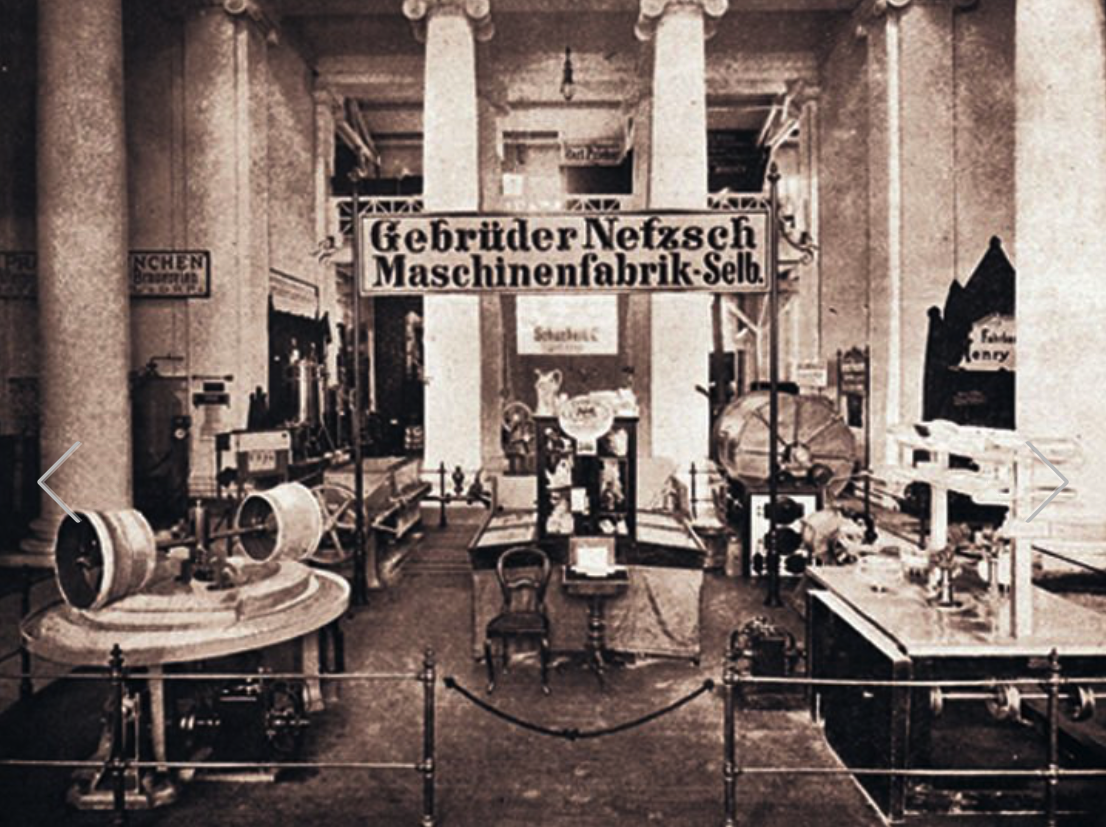Christian Netzsch
In 1873, Christian Netzsch founded the mechanical engineering company "Gebrüder Netzsch Selb" together with his brother Thomas. The closeness and friendship with Lorenz Hutschenreuther, eldest son of C.M. Hutschenreuther - brought the Netzsch brothers close to porcelain production. The latter built the first porcelain factory in Selb in 1857 and was regarded as the Samaritan of the entire region at the time. A year earlier, Selb had been hit by a catastrophic fire and more than 3,000 residents were left jobless and homeless.
Although two wars and a major structural change interrupted the development of both companies for decades, Netzsch and Hutschenreuther remained close to each other. In 1968, Wolfgang Netzsch, the grandson of the company founder, took over the company and led it ever closer to porcelain production. In 1974, Netzsch establishes itself in fine painting technology and opens a new factory in Tirschenreuth. In 1981, the Netzsch Group takes over Heinrich Zeidler Maschinenfabrik, thus expanding its importance and competence in the manufacture of machines and equipment for porcelain production.
As early as the beginning of the 1980s, Netzsch developed the process technology of isostatic pressing together with Hutschenreuther. Netzsch supplied the machine technology and Hutschenreuther AG the necessary isostatic granulate. On 20.04.1990, the process technology of isostatic pressing was registered as a lifelong and worldwide valid patent in favour of Hutschenreuther AG. An important branch of Hutschenreuther AG is created: World market leader for the production of isostatic granulate for porcelain manufacturing.
The invention relates to a process for the production of a ceramic moulding by shaping a ceramic moulding composition into a dimensionally stable moulding and subsequent firing of a moulding. When ceramic moulding compositions are referred to herein, the term "ceramic moulding composition" is to be understood in the broadest sense. It includes all fine and coarse ceramic moulding materials such as earthenware, stoneware, vitreous china, bone china and in particular porcelain, as well as technical ceramic materials based on silicon carbide, silicon nitride, aluminium oxide and zirconium oxide. When talking about ceramic moulded bodies, this term is also to be understood in the broadest sense independently of the shaping. In particular, however, thin-shelled moulded bodies are meant, as they occur as dinnerware in the form of plates, bowls, dishes and jugs. The invention has particular significance for the production of plates, bowls and dishes which can conventionally be produced by pressing powdered ceramic moulding compounds, e.g. from granulated porcelain grain. In principle, the invention is applicable to the processing of all technical dusts, including those of powder metallurgy.
Due to the bankruptcy of Hutschreuther AG in 2000, the patent rights of Netzsch are taken over. In 2001/2002 the Netzsch group of companies went bankrupt and was taken over by Sama Maschinenbau GmbH - a subsidiary of the Italian SACMI Group (Imola) on 16 October 2002. All patents and intangible assets thus leave Germany.
Since 2002, these technologies, developed in Germany and matured over many decades, have been sold worldwide. This sell-out of know-how has played a major role in the decline of the German porcelain industry. It is not the imports "from cheap China" - as is often said - that have destroyed this once proud branch of industry! It is the German machines and kilns, hundreds of which are now in operation in Poland, Romania, Czechoslovakia, Turkey, India, Bangladesh, Vietnam, Indonesia, Russia, Portugal and many other countries, producing porcelain of the same quality - without any brand claims - at much lower prices.
The Sorcerer's Apprentice by Johann Wolfgang von Goethe describes it with the words ... "Wehret den Geister, die ich rief".

